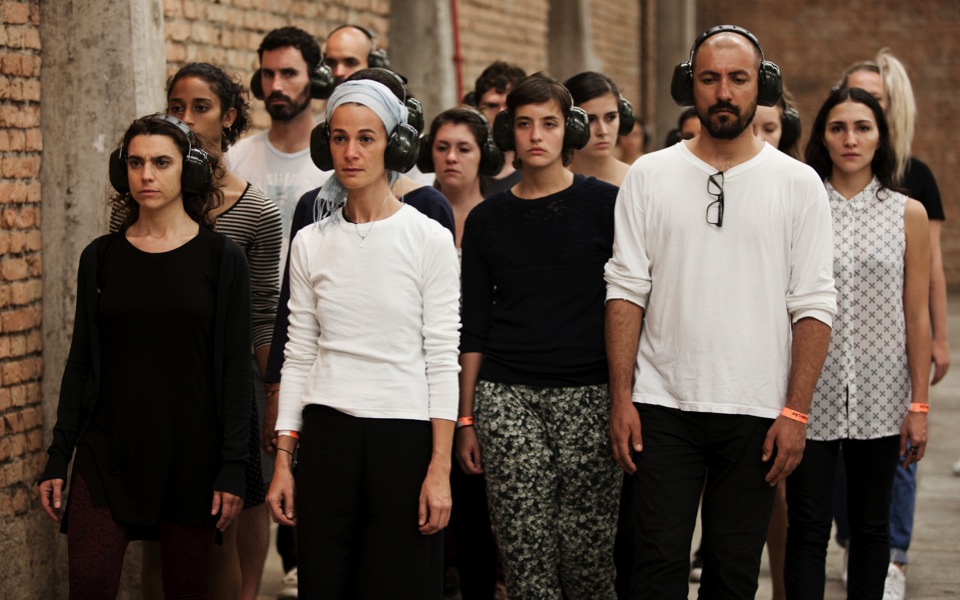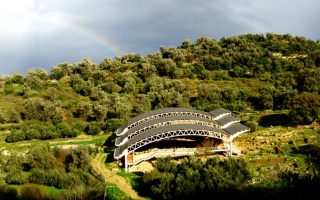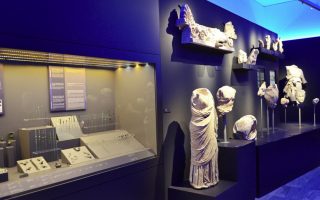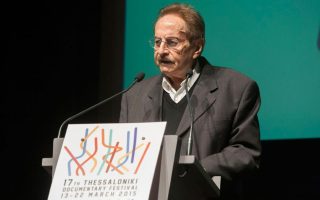Performance: The art of existence

Marina Abramovic's upcoming visit to Athens could prove the defining event on this year's Greek cultural calendar. Abramovic, the inspired Serb artist whose entire career has been linked to performance art, is expected in Greece to represent her namesake institute and participate in a joint project organized in association with Greek collector Dimitris Daskalopoulos's cultural organization NEON. The joint event is set to run for six weeks at the Benaki Museum's Pireos Street annex, starting on March 10. Members of the public will be able to take part in a performance as well as observe Greek performance artists working together with Abramovic exploring their physical and mental strength. In the meantime, the Serb artist and Daskalopoulos were kind enough to respond to a number of Kathimerini questions.
Is Greece-in-crisis challenging on a creative level? Can the country product art?
M.A. Art has everything to do with our existence and is constantly engaged in a singular choreography with life. When art happens honesty and with integrity, it exerts pressure, to the point of shifting, even crushing the boundaries of the body, soul and spirit, along with those of society. Sometimes this relationship is twofold, which is what is taking place in Greece today, where the boundaries are collapsing and giving rise to honest, intact, groundbreaking art. In any case, it's always a creative process, a deeply existential and psychological process which is interpreted by artists. It is not born solely out of current conditions.
Given that the art world is in constant movement, who would you say has the upper hand: the artists, the collectors or the curators?
D.D. The artist and his/her work is the basis and the link. Curators and museums do the research and reveal the artists and their work. Collectors pay and make strong critical choices. When you give your own money to buy works it shows conviction. As a collector, I consider myself a trustee of the creations of other gifted people. I'm interested in the artwork's public life, displaying works to a broad audience. I'm interested in art's democratic character, making sure that works of art are not just kept in storage areas, but that they converse with each other, raising emotions and questions. It's a collective process requiring synergies among artists, museums, curators, state institutions and the private sector, but, above all, synergy and participation on the part of the public.
What are the current dynamics that define performance art and what are we going to see in Athens?
M.A. Performance is an immaterial art. It has to do with space, time and, above all, people – artists and participants who often exchange roles. Through the use of the body as a tool of expression, through physical presence and emotional communication, performance is at the cutting edge of contemporary art. It's role will become more and more important. In the last four decades, my mission has been to introduce performance art to the broadest possible public and that's why I founded the Marina Abramovic Institute (MAI). In Athens, we will share a project which I'm constantly developing, the Abramovic Method: a series of exercises aimed at connecting our inner world with the experience of participating in something “now.” The idea of being here in the moment and not lost in thoughts, between the past and the future, between pain and fear. This is what life is about essentially. I chose Athens because it is a city I love, a place which has been through so much. And I chose to be present in the only way I know and can. The collaboration between MAI and NEON is a fortunate affair. We share similar values. What is also important is carrying on the collaboration even after the program is over.
Why is NEON presenting this project to Greek audiences?
D.D. In the last decade, all major museums have been reinforcing their ties with performance art. New spaces are being developed, while curators are exploring this form of art and presenting it to the public. NEON aims to bring contemporary culture to a broad audience and develop a dialogue with society. Art's value lies in emotion, the effect it has on the psychology and mentality of viewers coming into contact with the works. Performance art is 100 percent about this: stirring individual emotions while broadening one's perception to the maximum. In this case, the program co-developed by NEON and MAI is based on individual and collective participation; it's an opportunity for inner consultation and reflection. This leads to a singular relationship of trust being formed between the public, the artists and our fellow man. Abramovic is a leading figure in this pioneering movement, an artist whose contribution has played a pivotal role in establishing the trend. Her presence in Athens is of major importance.
Europe is experiencing an identity crisis due to the economy, immigration and the collapse of the postwar system. How could politics offer any solutions?
M.A. I come from a country which no longer exists on the map. I have firsthand experience with regard to what could happen if the “big certainties” are shaken. I believe that Europe will experience turmoil for years to come. The migration of millions of people from war-torn areas in the Middle East gives rise to major, timely questions regarding our genuine dedication to our European values. I feel that in the near future we will all be judged based on our reactions to the current humanitarian crisis. We are living a pivotal moment in time.
What is a collector's duty toward society? Do you consider that investing in contemporary art could trigger growth in a country such as Greece?
D.D. I understand the insistence – or perhaps ease – of referring to me as a collector, but I prefer to think of myself as a purveyor of other people's creativity and the liaison in the process of art's interaction with the public. It is a well-known fact that in culture, growth leads to employment and added value. Greece is well aware of this, since its cultural heritage is a source of wealth. However, the country also enjoys a vibrant, contemporary art scene. It's unthinkable not to invest in this and turn it into a dynamic source for growth. In countries where creative services are acknowledged as a driving force in the economy and are developed and supported, these may account for up to 10 percent of a nation's GDP.





